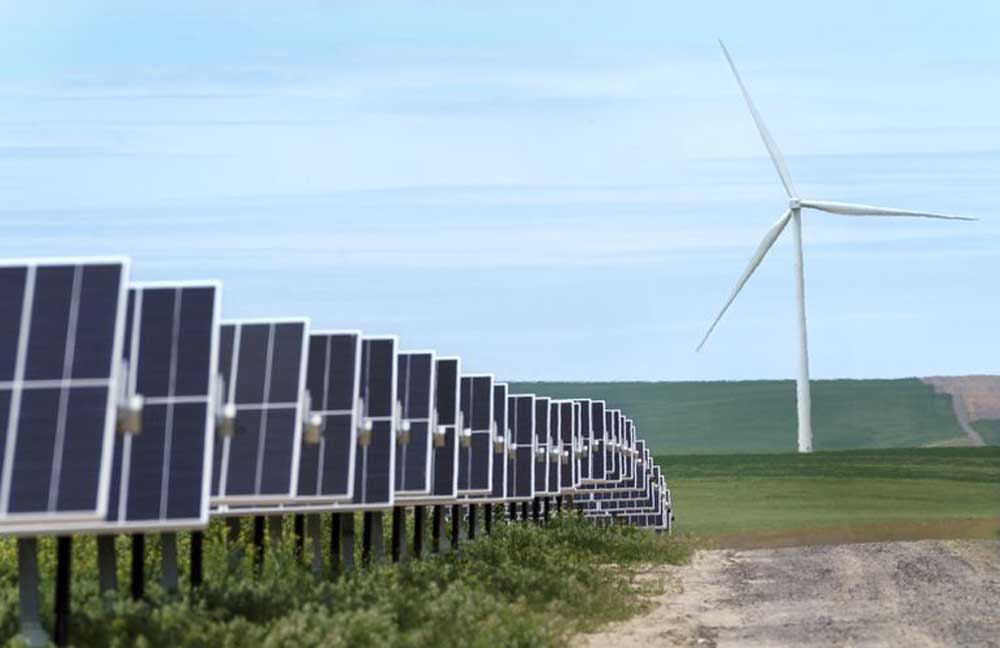The Future of the Moraines is the Future of Wallowa County
Published 6:00 am Wednesday, July 10, 2019

- The undeveloped moraines of Wallowa Lake are among the most iconic and valued landscapes of Wallowa County.
It was heartening to see the bright green sign inviting hikers and passers-by to contribute to the Campaign for the East Moraine. It’s about time that the people who live here, who know what the term “green gate” means, and who have so often made the respectful pilgrimage to the moraine’s top, now have avenues to contribute what they can afford so that future generations can experience the same access that we enjoy today. This is a working landscape beloved by working people. It’s good that we can all be part of its conservation. And while both the Campaign for the East Moraine and Wallowa Resources’ Ben Boswell Memorial Fund donation portals have been around for awhile, they were not widely known.
A publicly accessible, conserved and sustainable working landscape, especially one that residents and visitors can easily explore and understand, provides an invaluable educational opportunity. There is, for some people, a misapprehension that public lands (and even open, private lands) are some sort of park. What better way to educate misinformed, and sometimes naïve visitors than to proudly explain and showcase the East Moraine’s carefully managed private past and its future as a sustainable source of food and fiber for the community. Explaining, in fact, emphasizing, this to visitors as well as those of us who live here, is critical to the future of rural communities.
The member organizations of the Wallowa Lake Moraines Partnership also want to connect the county’s schools with the moraines, especially the biologically and geographically diverse Yanke property. To have an 1800-acre outdoor laboratory for environmental studies and natural resource management would likely be a dream come true for agriculture, natural resource and science programs.
Finally, a group of Portland educators who work mostly with high school students visited Wallowa Lake and the moraines last week. Among the questions they asked was one about “what kind of environmental justice issues Wallowa County faces.” “Environmental justice” is a nebulous term, but broadly it includes equitable distribution of environmental risks and benefits; fair and meaningful participation in environmental decision-making; recognition of community ways of life, local knowledge, and cultural difference; and the capability of communities and individuals to function and flourish in society. Wallowa County has a great diversity in incomes, and, increasingly, cultural diversity. A century ago–when neighbors knew neighbors, and visitors were less abundant–access to the entire landscape, including the moraines, was pretty easy to come by. You asked your neighbor or simply went, based on long-time mutual understandings. But today, as patterns of ownership change, private land owners are rightly more cautious about granting access. It seems increasingly important to ensure that residents who can’t afford to purchase property on the moraine can still take their children to see this astounding place, and that such places remain part of the community.
One more thing we have to remember is this: Sustainable natural resources in a working landscape means just that. Sustainable. The grasses that flourish on the east and west moraines are still dominantly native bunch grasses. Their deep roots are essential to holding the soils on those steep slopes in place. Invasive plants are fairly minimal. Sustainable means “causing little or no damage to the environment and therefore able to continue for a long time” and “able to be maintained or continued.” So if we are to tout this working landscape as an example of sustainable natural resources, we must ensure that those resources, bunchgrass forests and wildlife, are maintained at no less than their present abundance, health and resiliency, and improved over time. But that shouldn’t be a problem. The East Moraine has been managed that way for a long time in the past. And we can manage it that way for a very long time in the future.








